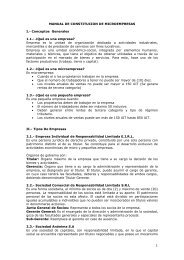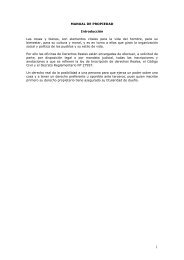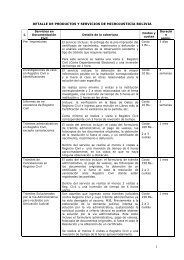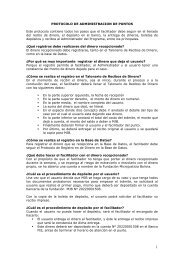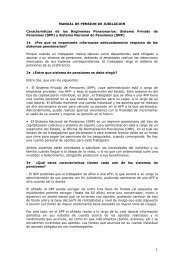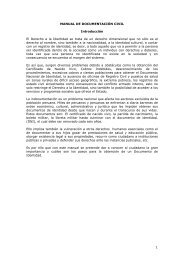ICISS report - International Coalition for the Responsibility to Protect
ICISS report - International Coalition for the Responsibility to Protect
ICISS report - International Coalition for the Responsibility to Protect
You also want an ePaper? Increase the reach of your titles
YUMPU automatically turns print PDFs into web optimized ePapers that Google loves.
The <strong>Responsibility</strong> <strong>to</strong> <strong>Protect</strong> 20<br />
3.6 In response <strong>to</strong> <strong>the</strong>se and o<strong>the</strong>r calls over <strong>the</strong> years, a promising array of international,<br />
regional, and non-governmental mechanisms <strong>for</strong> conflict prevention focused particularly on<br />
intra-state conflict was established or expanded in <strong>the</strong> 1990s. The Organization of African<br />
Unity (OAU), <strong>for</strong> instance, established in 1993 a Mechanism <strong>for</strong> Conflict Prevention,<br />
Management, and Settlement, with support from external donors. The Organization <strong>for</strong><br />
Security and Cooperation in Europe (OSCE) has developed a number of innovative internal<br />
mechanisms and practices <strong>to</strong>ward preventing conflict in Europe. Also important has been<br />
<strong>the</strong> increasingly significant role played by NGOs, particularly in <strong>the</strong> context of early warning<br />
ef<strong>for</strong>ts and helping <strong>to</strong> galvanize domestic and <strong>for</strong>eign public opinion in support of<br />
prevention measures.<br />
3.7 But UN and o<strong>the</strong>r resources devoted <strong>to</strong> prevention in all its <strong>for</strong>ms remain dwarfed by<br />
<strong>the</strong> resources devoted by intergovernmental organizations, and <strong>the</strong> states <strong>the</strong>mselves, <strong>to</strong><br />
preparation <strong>for</strong> war, <strong>to</strong> warfighting, <strong>to</strong> coercive intervention, <strong>to</strong> humanitarian assistance <strong>to</strong><br />
<strong>the</strong> victims of conflict and catastrophe, <strong>to</strong> post-intervention reconstruction, and <strong>to</strong> peacekeeping.<br />
Very often, those with <strong>the</strong> means <strong>to</strong> act prefer <strong>to</strong> play <strong>the</strong> odds, sometimes betting<br />
that <strong>the</strong> situation will somehow resolve itself, or that it will simmer without reaching a boil,<br />
or that <strong>the</strong> resulting conflict will prove less dire than predicted, or that conflict if it does<br />
break out can be quickly contained. The result, according <strong>to</strong> <strong>the</strong> Carnegie Commission on<br />
Preventing Deadly Conflict, was that <strong>the</strong> international community spent approximately<br />
$200 billion on conflict management in seven major interventions in <strong>the</strong> 1990s (Bosnia<br />
and Herzegovina, Somalia, Rwanda, Haiti, <strong>the</strong> Persian Gulf, Cambodia and El Salvador),<br />
but could have saved $130 billion through a more effective preventive approach.<br />
3.8 There remains a gap between rhe<strong>to</strong>ric and financial and political support <strong>for</strong> prevention.<br />
Not <strong>the</strong> least of <strong>the</strong> problems here has been with development assistance. While <strong>the</strong><br />
international community has become increasingly sophisticated in using development<br />
assistance <strong>to</strong> promote conflict prevention, <strong>the</strong>re has in recent years been a marked declined<br />
in <strong>the</strong> overall level of that assistance worldwide. Debts accumulated during <strong>the</strong> Cold War<br />
continue <strong>to</strong> place a tremendous repayment burden on many hard-pressed developing<br />
country economies, making scarce resources even scarcer, exacerbating income gaps within<br />
societies, and depriving many countries of <strong>the</strong> capacity <strong>to</strong> apply <strong>the</strong>ir own resources <strong>to</strong><br />
conflict prevention. The trade policies applied by many richer industrialized countries,<br />
unfairly disadvantaging or restricting access <strong>to</strong> markets, <strong>to</strong>ge<strong>the</strong>r with <strong>the</strong> terms of trade<br />
being experienced by many developing countries, have not made any easier <strong>the</strong> reduction of<br />
that debt burden, or <strong>the</strong> capacity <strong>to</strong> meet <strong>the</strong> social and economic development needs of<br />
<strong>the</strong>ir populations.<br />
3.9 For <strong>the</strong> effective prevention of conflict, and <strong>the</strong> related sources of human misery with<br />
which this <strong>report</strong> is concerned, three essential conditions have <strong>to</strong> be met. First, <strong>the</strong>re has <strong>to</strong><br />
be knowledge of <strong>the</strong> fragility of <strong>the</strong> situation and <strong>the</strong> risks associated with it – so called<br />
“early warning.” Second, <strong>the</strong>re has <strong>to</strong> be understanding of <strong>the</strong> policy measures available that<br />
are capable of making a difference – <strong>the</strong> so-called “preventive <strong>to</strong>olbox.” And third, <strong>the</strong>re has<br />
<strong>to</strong> be, as always, <strong>the</strong> willingness <strong>to</strong> apply those measures – <strong>the</strong> issue of “political will.” We<br />
shall say a little about <strong>the</strong> first two of <strong>the</strong>se conditions in this chapter, and about <strong>the</strong> third<br />
in Chapter 8. An extensive analysis of <strong>the</strong> modalities of conflict prevention is not <strong>the</strong> focus<br />
of this Commission: this ground has already been amply covered by many o<strong>the</strong>rs. But in <strong>the</strong><br />
context of <strong>the</strong> responsibility <strong>to</strong> protect, improving conflict prevention at every level – conceptually,<br />
strategically and operationally – is urgent and essential. Encouraging more serious<br />
and sustained ef<strong>for</strong>ts <strong>to</strong> address <strong>the</strong> root cause of <strong>the</strong> problems that put populations at risk,<br />
as well as more effective use of direct prevention measures, is a key objective of <strong>the</strong><br />
Commission’s ef<strong>for</strong>ts.



